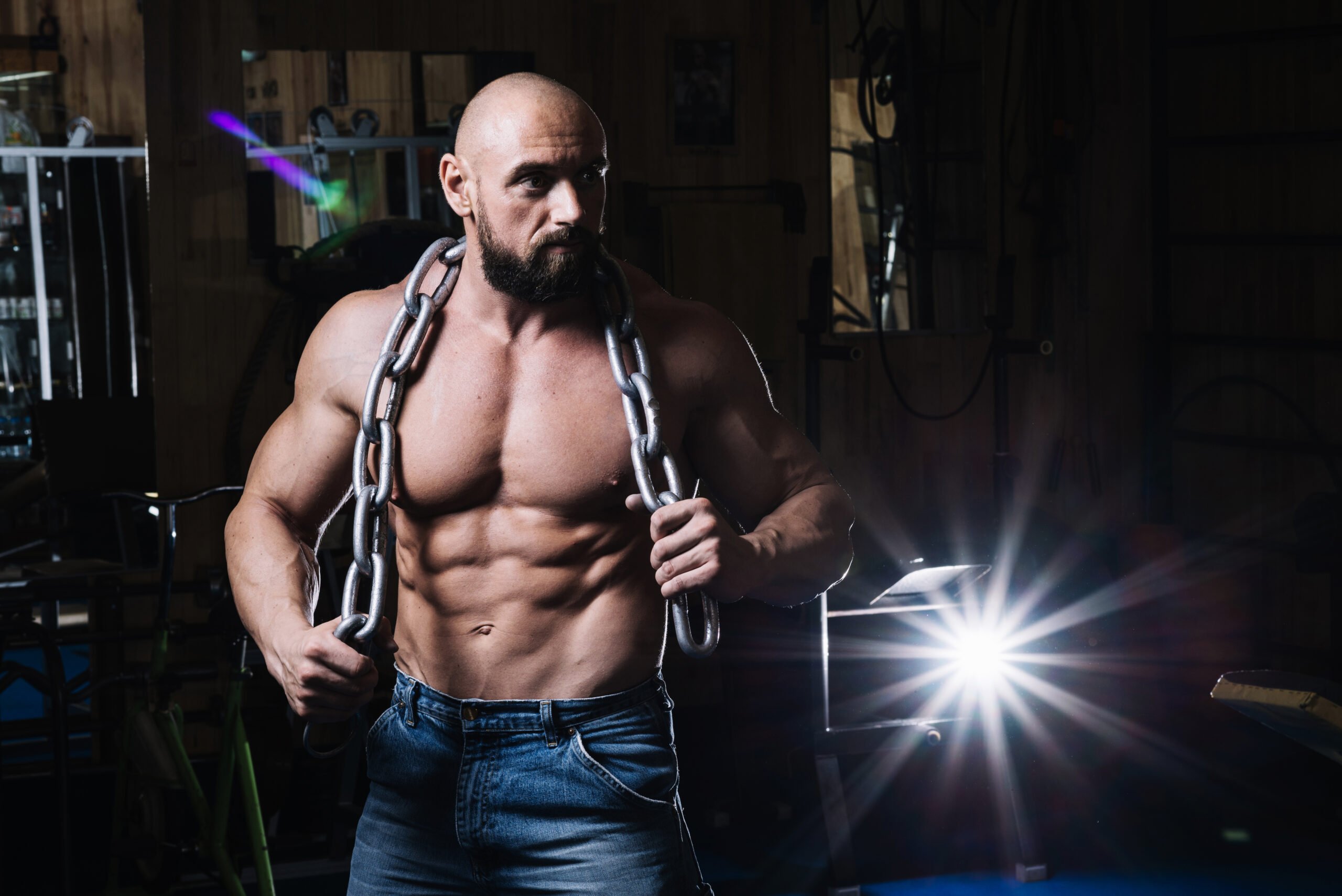Muscle building is super important for wrestlers. It helps them become stronger, last longer in matches, and move better.
To get strong, wrestlers do special workouts that work many muscles at once, like squats and push-ups. This doesn’t just make their muscles bigger; it also makes them better at wrestling moves.
Eating right is another big part of getting strong. Wrestlers eat lots of foods that help build muscle, like chicken and vegetables, and make sure they eat enough to have energy for training and recovery.
Rest is just as important as working out because it’s when the body heals and muscles grow stronger. Stretching and staying flexible are also key to prevent getting hurt and to move better in the ring.
By focusing on all these things – working out, eating right, resting, and staying flexible – wrestlers can improve a lot and be really good at their sport.
To get strong, wrestlers do special workouts that work many muscles at once, like squats and push-ups. This doesn’t just make their muscles bigger; it also makes them better at wrestling moves.
Eating right is another big part of getting strong. Wrestlers eat lots of foods that help build muscle, like chicken and vegetables, and make sure they eat enough to have energy for training and recovery.
Rest is just as important as working out because it’s when the body heals and muscles grow stronger. Stretching and staying flexible are also key to prevent getting hurt and to move better in the ring.
By focusing on all these things – working out, eating right, resting, and staying flexible – wrestlers can improve a lot and be really good at their sport.
Does Wrestling Make You Gain Muscle?
Yes, wrestling can help you gain muscle. Wrestling is a physically demanding sport that involves a lot of pushing, pulling, lifting, and moving in ways that engage your whole body. This intense physical activity works out multiple muscle groups simultaneously, including your arms, legs, back, and core.
The sport requires bursts of high-intensity effort, which can help build muscular strength and endurance. Additionally, wrestling practices often include strength training and conditioning exercises designed to improve performance on the mat, contributing to muscle growth.
However, like any sport or physical activity, the extent of muscle gain from wrestling will depend on various factors, including your diet, the intensity and frequency of your training, and your body’s natural predisposition. Eating enough protein and calories to fuel your workouts and recovery is crucial for muscle growth. So, while wrestling itself is a great workout, paying attention to your nutrition and overall training regimen will significantly influence how much muscle you gain.
The sport requires bursts of high-intensity effort, which can help build muscular strength and endurance. Additionally, wrestling practices often include strength training and conditioning exercises designed to improve performance on the mat, contributing to muscle growth.
However, like any sport or physical activity, the extent of muscle gain from wrestling will depend on various factors, including your diet, the intensity and frequency of your training, and your body’s natural predisposition. Eating enough protein and calories to fuel your workouts and recovery is crucial for muscle growth. So, while wrestling itself is a great workout, paying attention to your nutrition and overall training regimen will significantly influence how much muscle you gain.
How Do Wrestlers Develop Strong Muscles?
Wrestlers develop strong muscles through rigorous training, specialized diets, and recovery practices designed to enhance strength, endurance, and agility. Here’s how they do it:
Strength Training: Wrestlers engage in strength training exercises that target major muscle groups, including squats, deadlifts, bench presses, and power cleans. These exercises help in building muscle mass and strength essential for wrestling.
Explosive Training: To develop power, wrestlers incorporate plyometrics and explosive exercises like box jumps, sprinting, and medicine ball throws. These activities improve fast-twitch muscle fibers, which are crucial for the sudden bursts of power needed during a match.
Endurance Workouts: Wrestling matches can be intense and long-lasting, so wrestlers work on their endurance with cardio exercises such as running, swimming, or cycling. This helps increase their stamina and allows their muscles to perform at a high level for longer.
Flexibility and Mobility Exercises: Wrestlers also focus on flexibility and mobility to prevent injuries and ensure their muscles can endure the strains of different wrestling moves. Yoga and dynamic stretching are common practices.
Nutrition: A protein-rich diet is crucial for muscle recovery and growth. Wrestlers consume lean meats, fish, dairy, legumes, and protein supplements to aid in muscle repair and building. They also focus on a balanced intake of carbohydrates for energy and healthy fats for overall health.
Hydration and Recovery: Adequate water intake and proper rest are essential for muscle recovery. Wrestlers ensure they stay hydrated and get enough sleep to allow their muscles to repair and grow stronger.
Consistency and Discipline: Consistent training and adherence to a disciplined lifestyle, including regular workouts, proper diet, and sufficient rest, are key to developing strong muscles and improving wrestling performance.
Strength Training: Wrestlers engage in strength training exercises that target major muscle groups, including squats, deadlifts, bench presses, and power cleans. These exercises help in building muscle mass and strength essential for wrestling.
Explosive Training: To develop power, wrestlers incorporate plyometrics and explosive exercises like box jumps, sprinting, and medicine ball throws. These activities improve fast-twitch muscle fibers, which are crucial for the sudden bursts of power needed during a match.
Endurance Workouts: Wrestling matches can be intense and long-lasting, so wrestlers work on their endurance with cardio exercises such as running, swimming, or cycling. This helps increase their stamina and allows their muscles to perform at a high level for longer.
Flexibility and Mobility Exercises: Wrestlers also focus on flexibility and mobility to prevent injuries and ensure their muscles can endure the strains of different wrestling moves. Yoga and dynamic stretching are common practices.
Nutrition: A protein-rich diet is crucial for muscle recovery and growth. Wrestlers consume lean meats, fish, dairy, legumes, and protein supplements to aid in muscle repair and building. They also focus on a balanced intake of carbohydrates for energy and healthy fats for overall health.
Hydration and Recovery: Adequate water intake and proper rest are essential for muscle recovery. Wrestlers ensure they stay hydrated and get enough sleep to allow their muscles to repair and grow stronger.
Consistency and Discipline: Consistent training and adherence to a disciplined lifestyle, including regular workouts, proper diet, and sufficient rest, are key to developing strong muscles and improving wrestling performance.
Why Wrestling Alone Won’t Get You Ripped?
Wrestling is a demanding sport that requires a high level of physical fitness, strength, and endurance. While it can significantly improve your overall wellness, wrestling alone might not get you “ripped” or give you a highly defined muscular physique for several reasons:
Lack of Targeted Muscle Training: Wrestling focuses on functional strength, power, and endurance. It doesn’t specifically target muscle hypertrophy (growth) as a dedicated bodybuilding or weight training program does. Specific exercises designed to increase muscle size are essential for a ripped appearance.
Lack of Targeted Muscle Training: Wrestling focuses on functional strength, power, and endurance. It doesn’t specifically target muscle hypertrophy (growth) as a dedicated bodybuilding or weight training program does. Specific exercises designed to increase muscle size are essential for a ripped appearance.
Varied Intensity Levels: The intensity of wrestling practices and matches can vary greatly. While some sessions may be physically demanding and contribute to muscle growth, others might focus more on technique, which doesn’t stress the muscles enough to induce significant hypertrophy.
Caloric Expenditure: Wrestling is a high-calorie-burning activity. Without careful dietary planning, this high caloric burn can make it difficult to maintain the caloric surplus needed for muscle growth. Wrestlers often need to eat a lot just to maintain their weight, let alone create the surplus required for adding muscle mass.
Caloric Expenditure: Wrestling is a high-calorie-burning activity. Without careful dietary planning, this high caloric burn can make it difficult to maintain the caloric surplus needed for muscle growth. Wrestlers often need to eat a lot just to maintain their weight, let alone create the surplus required for adding muscle mass.

Recovery: Wrestling is physically taxing and can lead to muscle fatigue and injury if adequate recovery practices are not followed. The stress placed on the body without proper rest and recovery can hamper muscle growth. Moreover, the focus on constant conditioning and readiness for competition may not allow enough downtime for muscles to repair and grow.
Body Composition Goals: Wrestlers often aim for optimal performance in their weight class rather than achieving a ripped physique. This focus on weight management and functional strength may not align with the nutritional and training strategies that are specifically designed for muscle hypertrophy.
Body Composition Goals: Wrestlers often aim for optimal performance in their weight class rather than achieving a ripped physique. This focus on weight management and functional strength may not align with the nutritional and training strategies that are specifically designed for muscle hypertrophy.
A Proper Diet Will Help A Wrestler Get Ripped
A proper diet is crucial for a wrestler looking to get ripped, as it plays a pivotal role in shaping the body’s composition and enhancing athletic performance. While rigorous training and exercises are essential for building muscle and strength, the diet determines how effectively the body can repair, recover, and grow stronger muscles. Here’s how a proper diet contributes to getting a wrestler ripped:
Protein for Muscle Repair and Growth: High-quality proteins are vital for muscle repair and growth. Consuming adequate amounts of protein from lean meats, fish, dairy, eggs, and plant-based sources ensures the muscles have the necessary building blocks to recover from intense workouts and grow larger and stronger.
Carbohydrates for Energy: Carbohydrates are the body’s primary energy source. Eating the right amount and types of carbohydrates ensures wrestlers have enough energy for training sessions and matches. Complex carbohydrates like whole grains, vegetables, and fruits provide a steady energy release, while simple carbohydrates can offer quick energy boosts.
Healthy Fats for Overall Health: Fats are essential for hormone production, including testosterone, which is crucial for muscle growth. Sources of healthy fats, such as avocados, nuts, seeds, and olive oil, should be included in a wrestler’s diet to support muscle gain and overall health.
Hydration for Performance: Proper hydration is essential for optimal performance and recovery. Water helps transport nutrients to the muscles, supports metabolic processes, and aids in the digestion of food. Staying well-hydrated ensures that a wrestler’s body functions efficiently.
Micronutrients for Recovery: Vitamins and minerals play significant roles in energy production, muscle contraction, and recovery. A diet rich in a variety of fruits, vegetables, and whole foods ensures that wrestlers get a broad spectrum of micronutrients necessary for optimal health and performance.
Timing and Portions: Eating the right foods at the right times can enhance muscle growth and fat loss. Consuming protein and carbohydrates after workouts can help with muscle recovery and growth while controlling portion sizes and eating at regular intervals can help manage body fat levels.
Protein for Muscle Repair and Growth: High-quality proteins are vital for muscle repair and growth. Consuming adequate amounts of protein from lean meats, fish, dairy, eggs, and plant-based sources ensures the muscles have the necessary building blocks to recover from intense workouts and grow larger and stronger.
Carbohydrates for Energy: Carbohydrates are the body’s primary energy source. Eating the right amount and types of carbohydrates ensures wrestlers have enough energy for training sessions and matches. Complex carbohydrates like whole grains, vegetables, and fruits provide a steady energy release, while simple carbohydrates can offer quick energy boosts.
Healthy Fats for Overall Health: Fats are essential for hormone production, including testosterone, which is crucial for muscle growth. Sources of healthy fats, such as avocados, nuts, seeds, and olive oil, should be included in a wrestler’s diet to support muscle gain and overall health.
Hydration for Performance: Proper hydration is essential for optimal performance and recovery. Water helps transport nutrients to the muscles, supports metabolic processes, and aids in the digestion of food. Staying well-hydrated ensures that a wrestler’s body functions efficiently.
Micronutrients for Recovery: Vitamins and minerals play significant roles in energy production, muscle contraction, and recovery. A diet rich in a variety of fruits, vegetables, and whole foods ensures that wrestlers get a broad spectrum of micronutrients necessary for optimal health and performance.
Timing and Portions: Eating the right foods at the right times can enhance muscle growth and fat loss. Consuming protein and carbohydrates after workouts can help with muscle recovery and growth while controlling portion sizes and eating at regular intervals can help manage body fat levels.
Conclusion: Wrestling Gives You a Full Body Workout!
Wrestling provides a solid full-body workout, focusing on strength, agility, and endurance. However, getting a ripped physique involves more than just wrestling; it requires targeted strength training, precise nutrition, and proper recovery. Strength exercises are crucial for muscle growth, while a balanced diet rich in proteins, carbs, and fats fuels muscle repair and growth. Adequate hydration and rest ensure effective recovery, allowing the body to rebuild stronger.
Though wrestling builds functional muscle and fitness, adding weightlifting, specific conditioning exercises, and a tailored diet is essential for achieving muscle definition and size. A consistent, disciplined approach that combines wrestling with these elements boosts performance and helps wrestlers reach their physique goals. Wrestlers aiming for a ripped body must integrate wrestling, targeted training, and nutrition for optimal results.
Though wrestling builds functional muscle and fitness, adding weightlifting, specific conditioning exercises, and a tailored diet is essential for achieving muscle definition and size. A consistent, disciplined approach that combines wrestling with these elements boosts performance and helps wrestlers reach their physique goals. Wrestlers aiming for a ripped body must integrate wrestling, targeted training, and nutrition for optimal results.



![Does Using Crutches Build Muscle: Complete Guide [Updated]](https://supeshealth.com/wp-content/uploads/2024/03/full-shot-smiley-man-training-800x600.jpg)

